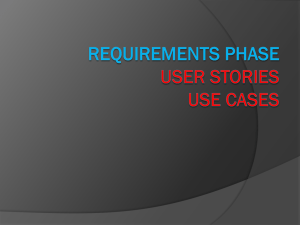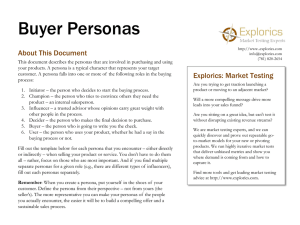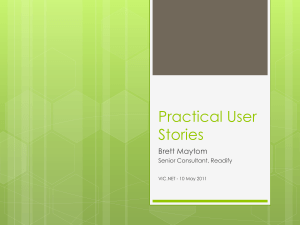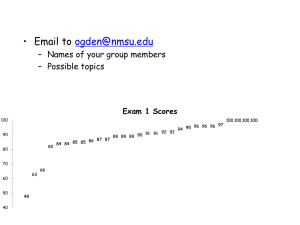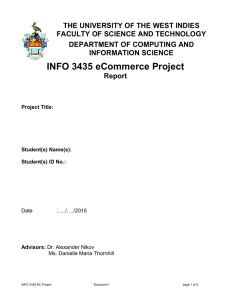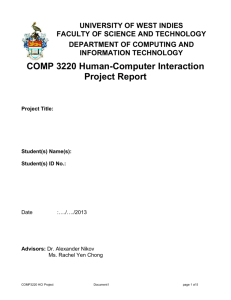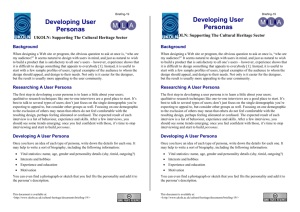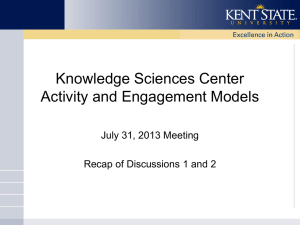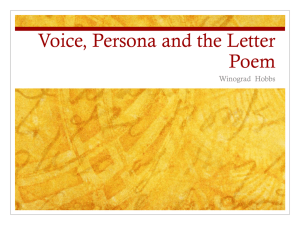User modelling and personas
advertisement
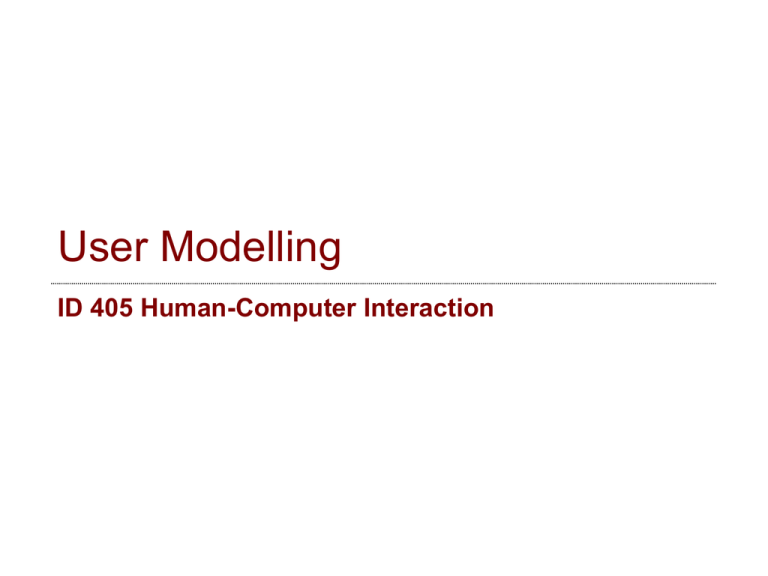
User Modelling ID 405 Human-Computer Interaction Ascending and Descending By M. C. Escher 1960 Mental models and program/design models Users’ mental model Designers’ program model What you are up against… - a mental model is what the user believes about the system at hand (belief, and not facts) - individual users each have their own mental model (different users, different models) - mental models are in a flux (users are bound to update models with experience) - users suffer model inertia* - mental models are simple (if design model is nontrivial, it's probably not the user model)* Let’s see some examples… - the word "Google" is usually the top query at other search engines, and words like "Yahoo" and "Bing" score high on Google - Why do people search for a website if they already know its name? Why not just type, google.com into the URL field? Let’s see some examples… Users don't just confuse search fields; many less tech-savvy users don't understand the differences between many other common features: •Operating-system windows vs. browser windows •A window vs. an application •Icons vs. applications •Collapsible/expandable views •Single-clicks vs. double-clicks •Local vs. remote info •… Let’s see some examples… - Netflix queue vs. shopping cart - Picture embedding in a word processor vs. WYSWYG HTML editor Let’s see some examples… - When people have to guess how a program is going to work, they tend to guess simple things, rather than complicated things Let’s see some examples… - When people have to guess how a program is going to work, they tend to guess simple things, rather than complicated things Let’s see some examples… - In Microsoft Windows the Alt+Tab key combination switches to the "next" window - Most users would probably assume that it simply rotates among all available windows - If you have window A, B, and C, with A active, Alt+Tab should take you to B. Alt+Tab again would take you to C - Actually, what happens is that the second Alt+Tab takes you back to A. The only way to get to C is to hold down Alt and press Tab twice. - It's a nice way to toggle between two applications, but almost nobody figures it out, because it's a slightly more complicated model than the rotate-among-availablewindows model So what can we do? In case of a mental model mismatch, you basically have two options: - Make the system conform to users' mental models - Improve users' mental models so that they more accurately reflect the system Personas - Personas are archetypes that describe various goals and observed behaviour patterns among your potential users and customers - A persona encapsulates and explains the most critical behavioural data in a way that designers and stakeholders can understand, remember and relate to - Personas use storytelling to engage the social and emotional aspects of our brain, which helps us to visualise and empathise with the user in a vivid and direct manner Personas Katie Bennet, digital camera user from Designing for the Digital Age: Creating Human-Centred Products and services by By Kim Goodwin (pp.230) -Set of goals -Mental model -Environment -Skills -Frustrations -Likes & dislikes -Attitudes -Typical tasks -Behaviour patterns -… What personas are - Personas are fictional characters but distilled from real data you gathered from actual users (data driven & not based on assumptions) - They are based on what users do and why they do them (actions, goals, motivations & behaviours) - Sound personas emerge from good data, rigorous analysis, and compelling human presentation What personas are NOT - Creative writing exercises with photos and fictitious biographical details - Market segments Market segments - averages Segment size and value Skills Demographics attitudes and behaviours always have May have Personas Mental models and goals What personas are NOT - Creative writing exercises with photos and fictitious biographical details - Market segments Market segments - averages Segment size and value Skills Demographics attitudes and behaviours always have May have Personas Mental models and goals Structure of a persona 1. Use a photo for your persona. A good photo is key to making the persona believable and convincing. Structure of a persona 2. Give your personas names. Refer to them by those names. Avoid silly or alliterative names. Also avoid placing your persona in a category (like “Stay-at-homeMom”). Silly names and categories allow people to stereotype the persona, and thus treat them as an other, not as someone potentially just like themselves. Structure of a persona 3. Highlight personas key behaviors and motivations. In order to deliver a great user experience, you need to understand why people would engage with that experience, and how they would go about it. Structure of a persona 4. Include basic demographic information. But only to the degree that helps a reader better understand who your persona is. Age, income, occupation, marital status can be informative. Structure of a persona 5. Provide key statements in the persona’s voice. This statement might be something you heard in a research interview, or it might be a fabrication. The quote will allow others to see a distinct person. Summary - User research is primarily about empathy — getting designers and developers to have empathy for their users, and be able to deliver products and services that really appreciate the users’ needs and goals - And personas are perhaps the best tool in the usercentered design toolbox for communicating empathy — they feel like real people with real concerns, and when crafted well, can transfer insights realized through research to other members of the project team Summary - User research is primarily about empathy — getting designers and developers to have empathy for their users, and be able to deliver products and services that really appreciate the users’ needs and goals - Personas are perhaps the best tool in the user-centered design toolbox for communicating empathy — they feel like real people with real concerns, and when crafted well, can transfer insights realized through research to other members of the project team
